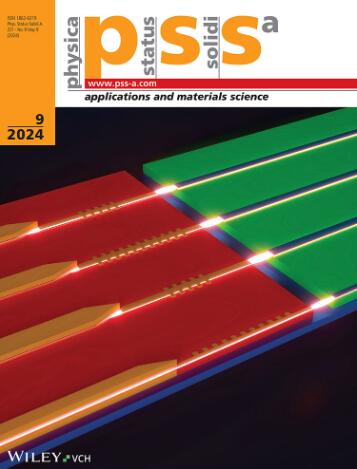The Impact of Bromine Surface Doping on the Structural, Optical, and Morphological Properties of Bismuth‐Based Perovskite Film as a Light‐Absorber in Perovskite Solar Cells
IF 1.9
4区 材料科学
Q3 MATERIALS SCIENCE, MULTIDISCIPLINARY
Physica Status Solidi A-applications and Materials Science
Pub Date : 2024-09-09
DOI:10.1002/pssa.202400512
引用次数: 0
Abstract
Bismuth‐based perovskite materials have concerned significant attention due to their low‐toxic and stable properties. However, achieving smooth and dense thin films for the preferential growth of bismuth‐based perovskite along the溴表面掺杂对作为包晶石太阳能电池光吸收剂的铋基包晶石薄膜的结构、光学和形态学特性的影响
铋基包晶石材料因其低毒、稳定的特性而备受关注。然而,要使铋基包晶石沿 c 轴优先生长并形成光滑致密的薄膜,从而有利于太阳能电池的制备,却是一项挑战。因此,使用卤素原子部分取代碘原子并限制各向异性生长已被证明是获得高质量透辉石薄膜的有效方法。在此,我们使用不同浓度的掺杂溴来处理铋基包晶石薄膜,与未掺杂的薄膜相比,铋基包晶石薄膜的晶粒更大、更致密。当掺入少量 Br 离子时,包晶石层的表面会变得更加均匀,从而显著提高包晶石薄膜的致密性。此外,适当的 Br 掺杂可以减少薄膜的内部缺陷,有效抑制非辐射重组,增强光吸收,延长载流子寿命。研究发现,掺杂 Br 的卤化铋包晶太阳能电池的最佳功率转换效率为 0.136%,而原始器件的最佳功率转换效率为 0.087%。
本文章由计算机程序翻译,如有差异,请以英文原文为准。
求助全文
约1分钟内获得全文
求助全文
来源期刊
CiteScore
3.70
自引率
5.00%
发文量
393
审稿时长
2 months
期刊介绍:
The physica status solidi (pss) journal group is devoted to the thorough peer review and the rapid publication of new and important results in all fields of solid state and materials physics, from basic science to applications and devices. Among the largest and most established international publications, the pss journals publish reviews, letters and original articles, as regular content as well as in special issues and topical sections.

 求助内容:
求助内容: 应助结果提醒方式:
应助结果提醒方式:


